REVIEW of older discontinued MP11 – After playing many Kawai acoustic pianos through the years, I believe they know what it takes to design professional quality grand pianos. Kawai has finally produced a portable digital piano that I consider to be as close to a grand piano key action as I have ever felt in a portable digital piano under $4000. Natural playing, high quality grand piano key actions is what all good piano companies aspire to produce and the key action is the #1 feature that any piano shopper should consider when purchasing any piano, acoustic or digital. For the first time that I know of on any portable digital piano, the Kawai MP11 has full length acoustic grand piano natural wooden black &
white keys which have been designed to actually play & function
like a full acoustic grand piano with the correct balance & fulcrum points.
digital piano has been upgraded over past models in very significant ways including key action, piano
sound, pedaling, functions, cabinet redesign, and more, and it is well
worth its higher internet discount price ($3499) over the previous MP10 and other digital pianos including pro portable pianos that cost more money than the MP11.
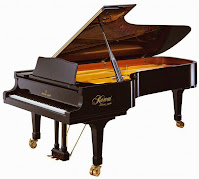
Up until now all portable digital pianos have had limitations with regard to how the black & white keys moved & are weighted because the key length and fulcrum points are different on digital pianos as opposed to a real grand piano. Although many of the new digital pianos play quite well and are enjoyable to play as compared to an upright piano, the amount of finger pressure it takes to push a regular digital piano key down because of upward key resistance along with proper key travel for both black & white keys is like that of an acoustic upright piano instead of a grand piano.
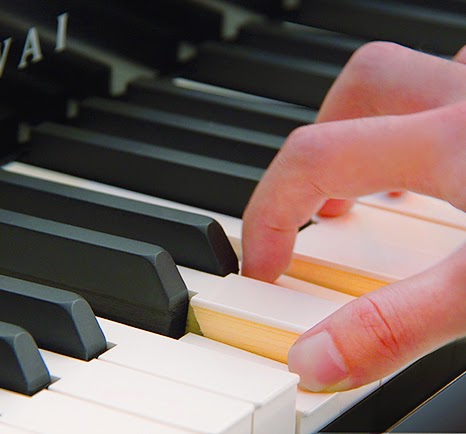
Typically when you play the black keys as well as the near the back of the white keys on most digital pianos, your fingers will need to exert a much larger of amount of pressure to push down the keys as compared to the front of the keys. This is called static touch weight
because it’s a measurement of pressure you need to push the keys down
from resting position. If the touch pressure needed from your fingers is
too heavy or too light, you will not get the correct dynamics,
smoothness of sound, and proper playing technique when trying to play a piece of
music well including possibly feeling fatigued in your hands and fingers if the touch
weight of the keys is too heavy.
keyboard touch weight are very important and the MP11 is very responsive in
this way. There are some digital pianos that are more difficult to play than others with regard to this static touch weight situation (the resistance of the keys to finger pressure) and some well known brands are very unreasonable in the amount of resistance the keys give when trying to press them down.

 Acoustic upright & grand pianos (left pics) have different key action movements and construction compared to each other because of the key length, design of the key actions themselves, gravity exerting itself in different ways on the key action, and size of the area the key actions have been installed in, to name a few reasons. This would be true for most digital pianos that normally use shorter length key with a pivot/fulcrum point & key weighting not conducive to full grand piano key response. To make my point, assuming you have an opportunity, just play (push on) the keys slowly from front to back on the black & white keys on a good acoustic grand piano and then try doing that on many brands and models of digital pianos such
Acoustic upright & grand pianos (left pics) have different key action movements and construction compared to each other because of the key length, design of the key actions themselves, gravity exerting itself in different ways on the key action, and size of the area the key actions have been installed in, to name a few reasons. This would be true for most digital pianos that normally use shorter length key with a pivot/fulcrum point & key weighting not conducive to full grand piano key response. To make my point, assuming you have an opportunity, just play (push on) the keys slowly from front to back on the black & white keys on a good acoustic grand piano and then try doing that on many brands and models of digital pianos such
as Yamaha/CLP/CVP/DGX, some Roland & Kawai digital pianos, or
Casio PX/AP
digital pianos for example.
or Casio digital piano key actions in those pianos are near as easy in pushing the black
or white keys down as you get to (play) the back of the keys as opposed
to the front of the black& white keys. This harder, more resistant key touch is characteristic of upright pianos and there are certainly a lot of people that enjoy playing upright acoustic pianos. But…good name brand grand pianos (overall) offer a richer playing experience that allows for subtle nuances and playing results are are simply not possible on most other pianos.
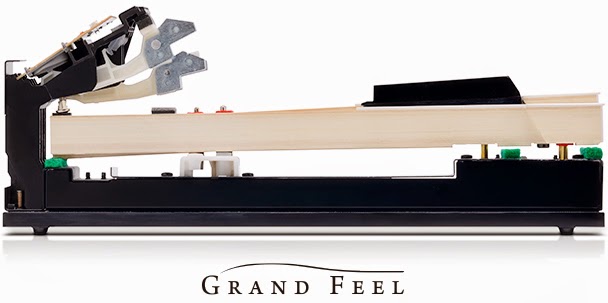
It is true that many new top name brand portable digital pianos other than the Kawai MP11 have, overall, very enjoyable & highly playable key actions such as the new, less expensive Kawai MP8 with its responsive RH3 key action including the escapement mechanism that is found in grand pianos. But with regard to giving you real authentic grand piano key movement, key travel, & balance no matter where your fingers are on the keys and what keys are being played, the new Kawai MP11 Grand Feel digital piano is the only new portable digital piano that will do

that in my opinion, and I have never felt a key action in a portable digital piano ever get that close to a real concert grand feel before.

hammer weight of each key which helps lighten the touch during more delicate passages of music, there is just nothing else that comes close to it. In fact, if you are a more advanced piano player and you close your eyes while you are playing the Kawai MP11, you may think you are playing a $100,000 concert grand in terms of key action feel, movement, and response.
The newer Kawai GF (Grand Feel) key action is really the heart and soul of the Kawai MP11 piano. Although the acoustic piano sound itself and 3-pedal system is very impressive and quite realistic for this price range, there are other good portable digital pianos out there under $3500 that also sound quite good such as the Kawai MP7 ($2199 internet price) that I mentioned earlier, or the Kawai CA49 furniture cabinet digital piano ($2899 internet price). But when it comes to authentic grand piano key movement, key size, key structure, graded hammer weighted key balance, key feel, and key response in a portable digital piano, the Kawai MP11 is in a league of its own and there is no question about that as far as I am concerned. The keytops have the Kawai ivory touch
material which is a satin reproduction of actual ivory used on older
acoustic pianos and it really feels good to the fingers to play
on and is sweat absorbent, and it is visually attractive as well.
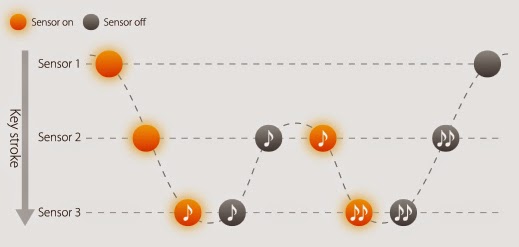
The actual key movement is very quiet as compared
with other brands and that is something Kawai key actions are known
for…being sturdy, well built, and quiet while moving easily with a
reasonable amount of touch weight required to play the keys. Then you add to that the newly designed 3-senor electronics under each key to better sense key/note repetition so that when you are playing the keys, no matter how fast your key repetition is or at what height the key is at when pressing them back down (strike point), the 3-sensor electronics will keep up with your playing and not miss any notes. In addition, Kawai’s action technology also monitors the speed at which
each key is lifted. These subtleties influence the release
character of piano sounds, providing a greater range of expression between staccato and legato playing. Yamaha, & Casio also use 3-sensors in their digital piano key electronics so this is not exclusive of Kawai pianos. But not all key sensors are created or installed equally on different brands so to me, the MP11 seems to be a bit more responsive in that way then other brands I have played.

The MP11 piano sound chip has a huge 256-note piano polyphony memory which allows the piano sound to be played with as much complexity as possible (given the technology) without running out of notes. The Kawai MP11 piano sound comes directly from their best concert grand pianos and is sampled in stereo using two microphones positioned in just the right way on a concert grand to get the authentic sound of what a real grand piano should sound like. I like the Kawai piano tone very much and it has a natural complexity to it regardless of the type of music you are playing. Kawai calls its new acoustic piano sound Harmonic
Imaging XL (HI-LX) 88-key sampling
to capture even more of the acoustic grand piano sound as well as
having recorded each note on a full size Kawai concert grand one at a time for a closer reproduction of an acoustic piano sound as opposed to recording one
note and then digitally stretching that note to become other higher or lower notes like some other piano brands do.
time and money in creating the digital piano sound, but it is not nearly
as realistic as 88-key individual note sampling with its large capacity
piano memory chip such as what Kawai is using. That’s why some of the cheaper digital pianos (and a
few that are even more money) don’t sound as good…because they sound more digital instead of natural.
In a real acoustic grand piano there are also all kinds of organic elements going on inside that piano when you are playing it. Things like damper pedal resonance, damper noise, dynamic tone, brightness, sympathetic vibrations,/string resonance, key noise, hammer noise, plate noise, resonance, etc. Reproducing these natural occurring acoustic piano sounds takes a lot of memory in the digital piano electronics and the Kawai MP11 does a fine job of this. In fact you can edit these acoustic elements within the MP11 so that it suits your own particular musical desires & needs.
MP11 piano sound is also impressive and you can electronically change
that range so that the overall piano tone can be more or less dynamic
with different tonal changes. That function is called the Virtual Piano Technician and there are so many ways of editing and modifying the piano sound on the MP11 it’s really quite amazing, and I, for one, like that kind of thing because then I am not locked into someone else’s sound. I just make a few simple changes through the user display screen under the editing functions and turn a knob or two, and then I have made my changes and can save them to memory. So when it comes to acoustic piano sound, the MP11 is outstanding in its price range in my opinion.
One thing about playing a digital piano that many people overlook is the piano pedaling
and whether or not it is authentic and will keep up with your music
allowing for realistic control over damper/sustain, sostenuto, and soft
pedaling. Pedaling is very important for expression and adding the
required amount of resonance and sustain effect, and the MP11 does a
great job of this. The MP11 comes with a pro quality triple pedal unit that functions like acoustic piano pedals. The
pedals are heavy duty, durable, and feels good to push down with your foot. The
damper pedal portion also does something that many included pedals with
portable pianos don’t do…and that function is called half-damper pedaling.
Half-damper is the amount of sustain you get when you press
down the pedal about half way and you would hear a medium amount of
sustain rather than just on or off. The amount or type of half-pedal
sustain can be adjusted in a few different ways depending on how you
want it and if you would be connecting to external MIDI pianos or
instruments. In either case, the pedaling realism on the Kawai is very
good.
Another part of the pedaling experience is being able to get an adequate amount of damper pedal resonance along with the proper amount of piano decay/sustain time.
Pedal resonance is the sound you get when you hold the sustain pedal
down and strike a note and the sound will naturally reverberate for
awhile inside a real piano. This acoustic piano pedal resonance has been
digitally recreated in the MP11 and is also adjustable for more or less
of that effect…and it sounds very realistic. Pedal sustain decay time
has to do with how long (how much time) the piano sound will be heard
while your damper pedal is pressed down and you let go of the key after
playing it. The longer the decay/sustain
time, especially in the bass
and mid-range key sections, the more natural the piano sound will sound. The MP11 has some good natural decay time but in my
opinion it could be longer in some ways.
you cannot change that function (length of sustain/decay time) but on
the MP11 you can change it by using a control that lengthens or shortens
the amount of time the piano sound will decay/sustain. This is a very
cool feature and allows the player to customize the pedal playing
experience to suit their musical needs. Although this pedal decay time
feature is quite usable, the average player may not need it. But to know
it’s there is a good thing and I have used it myself to adjust for
playing different kinds of music that require different pedaling
results.
simple…and the MP11 is excellent is recreating pedal realism with the included F30 triple pedal unit
so the player can access all three standard pedal functions and have the
traditional piano experience including the sostenuto and soft pedal.
The triple pedal unit can also be assigned to control other aspects of
the MP11 including changing instrument setup sound selection, organ rotary
speed activation, and triggering other useful features.
The MP11 is unique in its operating control panel and functions setup and not at all like any other portable digital piano under $3500 in the way you use it. The control panel has been redesigned and is now even more simple, straight forward, visually intuitive, and operates in a way which in my opinion will make you want to play music for hours. Rather than have many buttons, sliders, knobs, and other controls very close to each other for all sounds & effects (as you would find in most other brands and/ore models), the MP11 is like having three separate instruments in one. In other words you don’t to be a rocket
scientist or keyboard pro to use the functions & features. There is a nice size user LCD display screen directly above the middle of the keyboard (near middle C) in the center of the panel.
In each of the three separate instrument sections you can only play one instrument per section at a time, but you can combine each of the 3 sections together and play (up to) three instruments at the same time. So for instance you could have the concert grand piano in the piano section (section 1) combined with one electric piano in the E Piano section (section 2), and then combine those two sounds with the symphony strings in the miscellaneous sub section (section 3). Unfortunately you cannot play more than one sound at a time within one section. As an example, the harpsichord sound the sub section 3 cannot be combined with the
symphony string sound, which is also in sub section 3.
However, the MP11 has something which somewhat makes up for that shortcoming which the Kawai MP7 does not have. In addition to the three separate instrument sections on the MP11, in each of those sections there are three additional sounds (they are the same in each section) that can be added one at a time (or in any combination) to the main instrument that is playing in that section. Those three extra sounds include what Kawai calls Air (sounds like an airy synth), Bell (sounds like synth bells), and Vocal (sounds like a choir).
Explaining this in words can be a bit confusing so here is an example of what I am saying. In the Acoustic Piano section 1 you could add the vocal choir sound to any one of the acoustic pianos. In the Electric Piano section 2 you could add the Air sound (and maybe the Bell sound too) to one of the Electric pianos, and in the sub section 3 you could add a vocal and bell sound to the string symphony tone because you can use up to 3 additional tones added to any one section sound. If you used the 3 additional Air, Vocal, and Bell sounds in each section (controlling all their volumes independently) and add them simultaneously to each section which can play one main instrument sound at a time, you could
actually have up to 12 sounds with their own independent volume settings playing on every note that you play!
The acoustic piano playing experience is the meat & potatoes of the MP11 and the rest of the features and functions is the “frosting on the cake.“ I believe that is the best way of looking at this piano when considering a purchase. However, there are some amazing electric piano sounds on the MP11 including Fender Rhodes, Yamaha DX7, Wurlitzer vintage electrics, beautiful string sounds, soothing pad/synth sounds, accurate old world harpsichord, beautiful vibes, and percussive marimba tones, and great upright bass sounds that have that organic acoustic feel with that string twang and tone to them which are very impressive. You can easily split the keyboard into (up to) three independent sections with dedicated split buttons and assign a different instrument sound to each section of keys and decide where that sound needs to be and how many keys it should occupy.
There are 100 high quality preset drum patterns for play-along with the built-in drummer. These patterns include a variety of rock, jazz, Latin, blues, funk, waltz, gospel, country, and many other popular
rhythm styles. You can control the tempo, volume, and
other aspects of the rhythm section and it’s fun to interact with the rhythms, especially if you enjoy a little help in sounding better than you are or you are just wanting a drummer to join in on your music for rhythmic entertainment. The 100 drum rhythms are part of the metronome feature which also includes different adjustable metronome timings to help you practice a piece of music. Although the drum patterns can be enjoyable to play along with, they are just there for fun and not necessarily to be taken seriously as something which rivals a real drummer:). But it does work and is a feature that other studio stage pianos do not have.
A feature that I find very useful on digital pianos is the ability to record yourself and play it back.
Almost all digital pianos have some sort of a recording feature with
some being better than others. The MP11 can do this is two ways… either
a 1 track MIDI (non-audio) recording for simple song play and music writing ideas, or a multitrack overdub audio recorder that lets you record multiple tracks, one instrument over the other, in either wav
(CD quality) recordings or MP3 audio song files. This feature is not
found on any other digital piano under $2000 and is incredibly cool
because it allows you to orchestrate and arrange any song so that you
can play & record each instrument that you want in the song so that
when one instrument is recorded, you play that recording back while you
record the next instrument audio track over the top of that.
 Each
Eachinstrument can be individually setup exactly the way you want it to
sound and then recorded and saved to a USB flashdrive to be played back
on your computer or MP3 player (iPod, etc). You can also convert a MIDI
recording to audio for playback as a wav or MP3 file. You can even take an audio or
simple MIDI song and play a specific part of it over and over for
practice in a non-stop loop so that you can playalong with that part to
learn it better.
With an independent volume
slider controller on the panel of the MP11, you can also plug in a
microphone or any instruments (including iPad sounds) and record it live
through the piano and mix it with your recorded keyboard playing,
including loading in iTunes to the audio player to play along with them
and record them into memory, which sounds great.
overdubbing and playback using the actual sounds on the MP11 (as well as
external sounds) is a fantastic way of creating music in ways that you
could never do before on a digital piano in this price range. It’s good to be aware that the MP11 does not play or record 16-track General MIDI
type song files. I believe this functionality should have been included
in the MP11, but hey, who am I and what do I know?:). It would have
obviously added to the cost of the instrument and Kawai probably thought this feature was
not necessary in the MP11…although I would have used it.
The Kawai MP11 is also known as a master (MIDI) controller piano and that ability is useful for beginner players up through seasoned professionals. A controller
is something that controls things such as external devices that you
want to add to the MP11…makes sense, right?:). Well, when it comes to
giving the player ultimate control over all types of external devices,
the MP11 does an excellent job and it now has 4 independent MIDI out zones to make controlling multiple external devices even easier and more intuitive. You can control the over 60 parameters of each MIDI channel independently along with zone volume settings and see them in the display screen. You can also save all of your MIDI setups in a large bank of user memories so that you do not ever have to reconfigure them, which can take a lot of time.
these days when wanting to connect external MIDI devices and use the MIDI zone controllers to add new things to their existing digital
piano is to connect an iPad. The iPad music and piano apps are quite exciting and you can add new sounds from an iPad to your playing by
controlling them from the MP11 when you play the keys. In this way you can get the additional instrument sound layering and splitting through MIDI devices that the MP11 does not provide on its own. So this pretty much solves that problem and opens up the MP11 do do things musically it may not be able to do by itself.

The way an iPad works with the MP11
is that you would connect your iPad to the piano by using a USB adapter
and cable and plugging the iPad into the MP11 USB port. After you do that then you can also route the audio signal
of the iPad by connecting the appropriate audio cable from the iPad
(mini headphone jack) to the audio input on the MP11. The audio input
also has a real time volume control slider on the front panel of the MP11 called Line In. When
you play the keys (a song) on the MP11, your playing would trigger the
new instrument sounds or any other MIDI functions on the iPad, and then
you could hear those new sounds coming back through the audio input in
the MP11 which would go out to your external audio speaker system or
stereo
headphones. The controlling aspect is further enhanced
because you can assign your iPad device to one of 4 zones/channels of
the MP11 and activate the MP11 independently or in conjunction with the
sounds in the MP11 (as I mentioned earlier).
apps including Garage Band, is like adding brand new
sounds, drums, recording, effects, interactive music education, etc. You
can also do this with a laptop computer interfacing with notation
software for music composition or arranging all easily controlled by the
Kawai MP11. Professional players use iPad as well as MIDI sound
modules, MIDI keyboards, virtual computer software for laptops, and
other devices to add even more controlling power to the MP11. In fact, you can connect MIDI devices with MIDI connectors into the MP11 using the in-out-thru jacks on the piano and also connect a USB device like a computer and use (and control) the external devices at the same time. This is a big feature for people who want to have external controlling flexibility of devices that have different connectors.

As far as additional connectivity
on the MP11 goes, on the back of the piano it has MIDI
1/4″ audio outs, fixed XLR outputs with a ground lift (for pro applications), dual audio inputs, single damper pedal input, three separate pedal inputs for damper-sostenuto-soft, expression pedal
input to control expressive  sustained instruments such as pipe organ,
sustained instruments such as pipe organ,
church organ, synths, strings, etc, all on the back of the piano. Kawai
has (finally) written the names of the connectors on the top back of the
piano directly over where the connectors are located so that you know
where they are.
piano to know where to pug in things and that is always a big pain! So
that has been taken care of too…and I commend Kawai for doing that. On
the front of the piano it has a stereo headphone jack input and a USB
flashdrive input for loading and saving recorded songs and backing up panel memories.

The cabinet color and case materials
has been upgraded from the previous MP10 and is now a sleek semi-gloss
textured black metal top. It comes with a sturdy metal removable music rack to support your sheet music. The lettering/names of the functions and
buttons on the case itself have been redone in a more contemporary design and the text is a brighter
white and much easier to see. I like the ergonomics/layout of the MP11 and it feels comfortable to look at. The knobs, light-up buttons, and sliders are high quality and feel sturdy and solid to the touch and are easy to use with good spacing between them. The body of the MP11 has been extended in depth by slightly over 1″ to accommodate the longer key action inside the piano. The end caps of the piano are made of mahogany veneers and add a
touch of class to this model and the MP10 had that as well which I
like very much because the other stage pianos are typically all
black/white plastic and/or metal.
which is not light, but for this much piano given its durable metal
construction (not plastic), solid cabinet, and hammer weighted keyboard,
that’s not bad. The piano measurements are approx
54′ wide x 18′ deep x 7 1/4″ high. If you need a case for this piano
semi-hard travel case with wheels for those people who want to take the
piano with them for events or functions.
The Kawai MP11 is considered to be a portable stage piano (controller) because it has no speakers built in and with its built-in external controller functions, it can easily control many other MIDI devices including computers, keyboards, and sound modules that recording studios and professionals use when creating music. It also has two wheel controllers (pitch bench & modulation) which work well and are assignable to other functions for quick, specific controlling. Although all of these controller functions can help users in a number of ways, for many people they may not use any (or very few) of those things because they really just want to play the piano
…and that’s OK as far as I am concerned.
functions can be fun as well as useful for some people (I like them), there is
something to be said for an elegant, simple to use digital piano like
the MP11 focused on fewer things but offering the best results in
playing piano in this price range.
| Kawai MP11 |
In the final analysis I believe this will be what most people will use this piano for...to play piano and many people will set this instrument up in their home living rooms, family rooms, home recording studio rooms, in their church, school, or other traditional venue where it will be connected to some nice speakers (there are specific ones I recommend) or to some high quality stereo headphones so that you will feel like you’re playing a real 9′ concert grand piano…and really, isn’t that what it’s all about? The MP11 will put you there and give you control over your music along with some nice additional features to add even more life to your music so that it will move your musical soul, inspire you, and allow you to play music on a digital piano in
ways you may not have thought possible.
| Kawai MP7 |
By the way, for those people who cannot afford or don’t want to be in this $3500 price range, the “little brother/sister” of the MP11 (called the MP7) has many of the same functions and controls of the MP11 and even has the same piano sound and pedaling functions, but is at a much lower price of $2199 internet discount price. It’s really not “little” as the MP7 has a very similar size and appearance compared to the MP11. At over $1000 less than the MP11, the MP7 may be a very good option for you (I like it a lot) and although the key action of the MP7 is not the MP11 key action, it is the best key action under or near $2000 of any digital stage piano built today in my opinion, and it’s enjoyable to play. Check out my Kawai MP7 review here at the following link: Kawai MP7 Review
If you want more info on new digital pianos and LOWER PRICES than internet discounts or Amazon, please email me at tim@azpianowholesale.com or call direct at 602-571-1864.
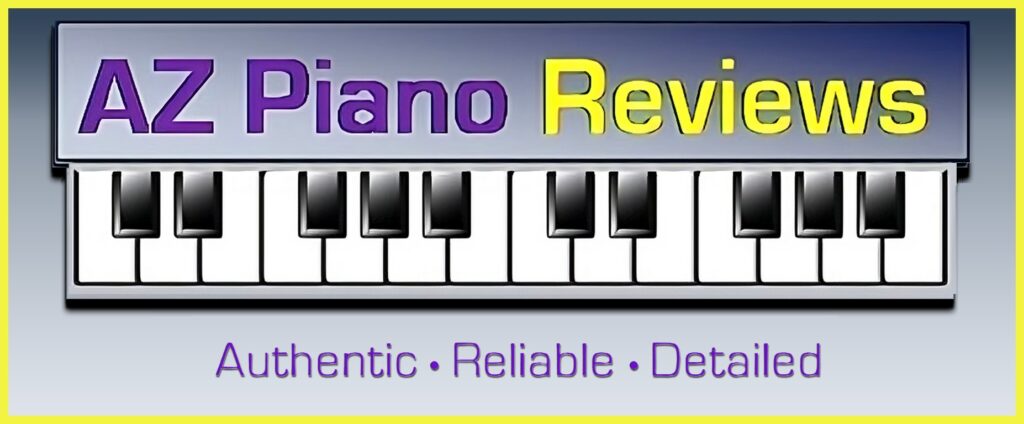






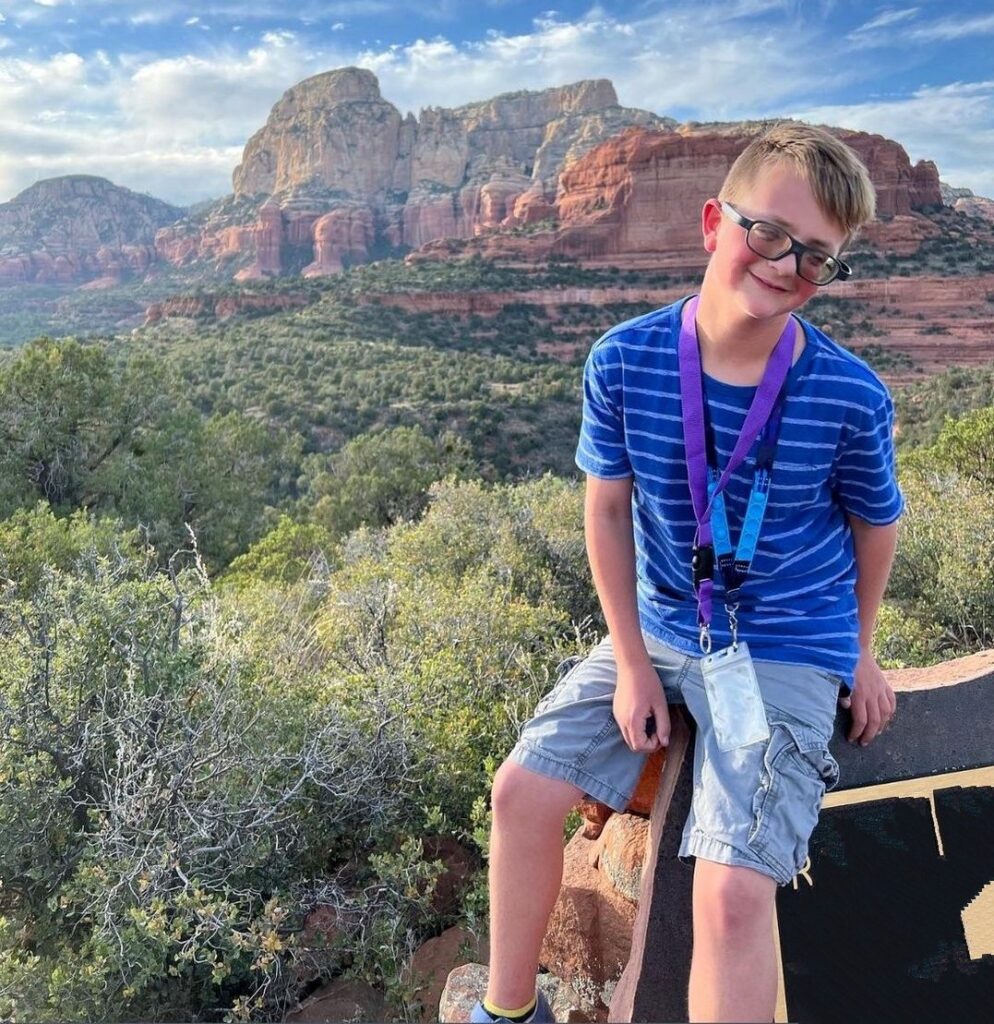
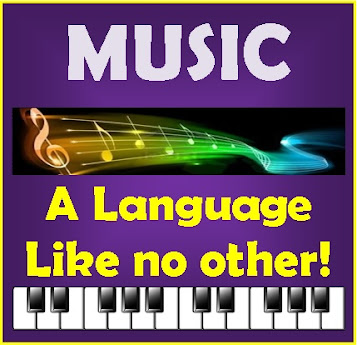
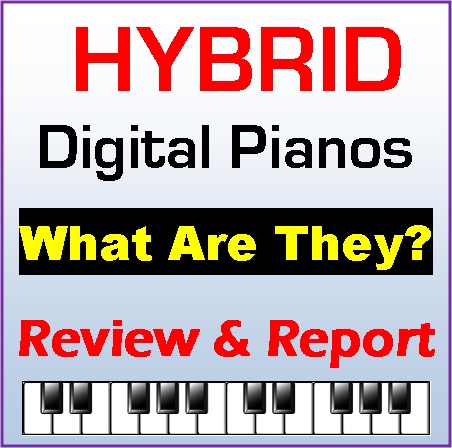
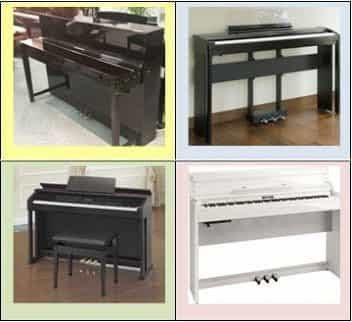
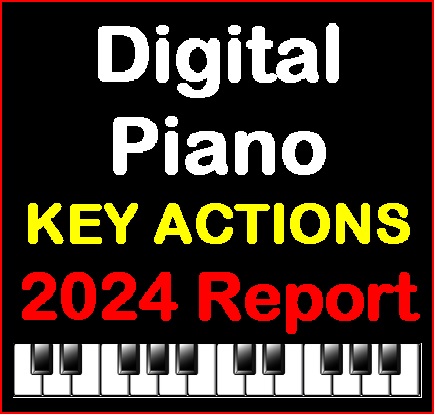
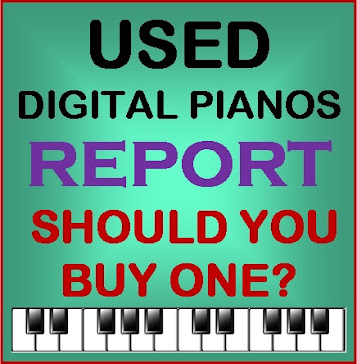
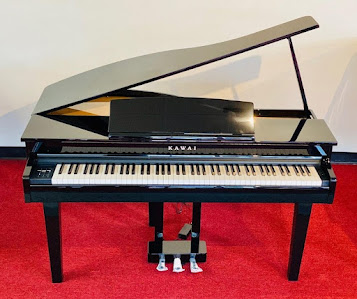
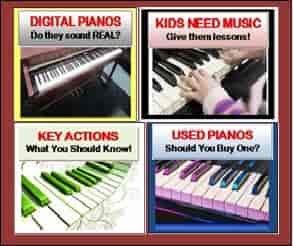
Hi. I am an amateur jazz pianist. I am now choosing between Kawai MP11, Roland RD800 and Yamaha CP4 as a stage piano. I want to use it both in rehearsal room and at small local gigs. My local dealer will have them all in the shop in about a week. Which one would you choose? They are all approximately at same price here.
Thanks,
Martin
you could likely be happy on any of them. However in terms of piano sound and key action in that price range, the Kawai MP11 is the best in terms of those features in my opinion followed by the Roland RD800 and then the Yamaha. However, The new Kawai MP7 is, in my opinion, above the Yamaha in terms of overall realism and useability., and the MP7 is less money. Where do you live?
Thank you. I live in Slovakia (Central Europe) and the availability of higher range of pianos is not very good here. I am also expecting to use electrical piano sound from time to time (particularly Rhodes).
Hey. I am strongly considering to buy this mp11 dp, so i wanted to ask, what external speakers you would recommend for a budget of 400$ maximum. By the way i am a classical trained pianist and I don't mind if the speakers don't have particularly deep and strong bass.
Thanks
Lovro
Please contact me by email and let me know where you live and then I can give you some recommendations of speakers
Hello, does Kawai VPC1 midi have the same key action as Kawai mp11 ? What is your opinion about quality of both (key action and overall) ? Thank you !
No, the two models have different key actions. The VPC1 has (without a doubt) the best grand style key action in any portable digital piano MIDI controller. The MP11 has (without a doubt) the best grand style key action in any portable digital piano regardless of being a controller with no internal sounds or a digital piano with internal sounds and functions. It just depends on what you want and need, and your budget.
Thanks you for response. I have emailed u like u said
Lovro
Hi Tim,
Thanks to your recommendation, recently I bought MP11.. It’s a good digital piano with all the features it has for the price, especially sound and key response.. Yamaha Modus series have a superior sound comparing to MP11 but they are 3 times more expensive. Hope, Kawai will reach the same sound quality in the future MP series..
I must say that your comparison of the Kawai MP11 to the Yamaha Modus is pretty strange. The Modus model is a fairly basic piano overall, in a fancy (and expensive) cabinet with a built-in speaker system for home use primarily. The Kawai MP11 is a piano and controller portable instrument with no internal speakers and has sounds, functions, and editing controls which the Yamaha does not have. Also, the MP11 has an authentic all wood (black & white keys) full length acoustic piano key action with acoustic piano see-saw key movement technology, the Yamaha does not have that. The 2 pianos are for different needs and different purposes, and are vastly different prices. I hope you enjoy your MP11.
Hi, I currently own an MP10 and I find the action to be too heavy. Is the action on the MP11 appreciably lighter in comparison?
hi. thank you. which speakers would you recommend?
Hello Tim,
thank you for your extensive Review on the MP 11. I would ask you two questions:
1. You mention specific Speakers that you would recommend? Which Speakers would be good? I think about buying a small Genelec Speaker.
2. How does the Sound of the MP 11 compare to a (good) digital piano? Competitive?
I would aprreciate your reply.
Kind Regards,
Christoph
For speakers buy JBL LSR 305. The piano sound of Kawa is the best, compared with Roland RD 800 but the key action of the keybed (even though is highly reviewed) I find it unpleasently heavier. The key actions of Roland RD 800 is much more friendly in my opinion
I'd like to buy one of these maybe. I wonder if the piano sounds are anything like the nasty acoustic Korg SV sounds? It was like; 'Here, we'll give you all these architecture settings to see if you can make really bad samples sounds any better!!??' The Korg promised so much but delivered so little, although the electric sounds were good. I'd hate to think it was the same with the Kawai. One thing that make me dubious is the built in drum machine? Why would Kawai have put that in if it weren't just to add a bit more 'gimmick' to an already gimciky machine? I know this sounds jaded. I have trouble believing this is as good as it's proclaimed to be for under $3000.00
I do not work for the Kawai company so I do not have access to their intentions with regard to certain features they design into their products. If you are worried about the MP11 and how it may work or sound, then I would recommend you do not buy one. You'll likely sleep easier that way.
Thank you for this review, Tim. I guess there is a little misspell in the article. When you wrote "…less expensive Kawai MP8…" I guess you meant ES8. And I have one question. Do you consider the keyboard and mainly the touch/sound connection on MP11 to be identical with that on CA-65/CA-95? They are supposed to have same keyboard but do they really feel the same? Are they equally expressive?
I agree, MP11's keyboard is heavy, it requires much effort to deliver rich sound. But to some extent it could be corrected by setting "Touch" parameter to "Light" option. Or better by manually defining a touch curve somewhere between "Normal" and "Light". A salesman said MP11 allows to do that. By the way, what subwoofer would you combine with JBL LSR 305? I like JBL LSR 305's very much.
Finally I had a chance to compare MP11 with CA piano series and I can affirm that MP11's keyboard is more responsive than CA-65's and even than CA-67/CA-97's. MP11 is a totally different thing.
I am just a beginner trying to learn to play the piano.
I wanted a serious piano (within my budget).. At some point, I researched Tim’s site and discovered the MP11. After all the researching smoke settled (and a delightful phone conversation with Tim), I decided that the MP11 was the perfect piano for me.
I am using "Playground Sessions" connected to my new MP11 and I am enjoying the combo very much.
I have no regrets.. The MP11 is an absolutely beautiful instrument and it sounds amazing.
It has a very sturdy metal music stand and I was able to set a 20" computer monitor into it with room to spare.
I have it backed up to a wall so the music stand with the monitor actually rest against the wall which helps take most of the monitor stress from the MP11 music stand mount points..
I got an "On-Stage" WS8550 "Large Format Heavy-Duty T-Stand" and it holds it very steadily. No shaking or wobbles when I play.
For speakers I had my sights on a pair of real nice studio monitors but I had to get something within my budget right away so I ordered an inexpensive pair of "Mackie CR Series CR3s" and I gotta tell you that they sound so good that I will probably continue to use them for the foreseeable future..
I went ahead and got a full piano bench for it that opens up and store my music. The bench works out great and adds to the overall furniture look of the MP11 .
https://www.flickr.com/photos/lotts-family/30376822413
https://www.flickr.com/photos/lotts-family/31069608241